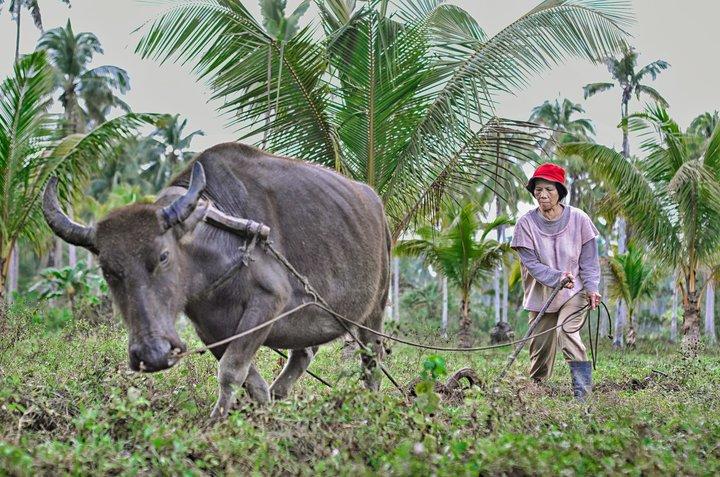Plowing with buffaloes in the Philippines - an interview with one of the photo contest winners

One of our photo contest winners, Alexis Gomez, a passionate photographer, tells us about women's role in traditional farming in the Philippines.
One of our photo contest winners, Alexis Gomez, a passionate photographer, tells us about women's role in traditional farming in the Philippines. Alexis and the other two winners of the photo contest will each receive a digital photo camera.
Are you a farmer, a research fellow, a traveler? Who are you? What do you do in your life?
My name is Alexis P. Gomez, 35 years old, married and living in Butuan City, Philippines. In 2012 I got hooked on photography. There’s an inner peace and satisfaction whenever I get hold of my camera. It’s just like I was born with it. I felt that photography is my life, a place where my interest and inclinations are geared towards promoting a more interesting and fulfilling life for everyone.
How would you describe your relationship with agricultural biodiversity? Why is it important to you?
My primary concern towards agricultural biodiversity is to educate and properly instill to the people, especially the farmers, to become responsible. Make them aware about what to do and what not to do when it comes to responsible farming, eradicating the practices of using harmful pesticides and chemicals for the preservation of a productive community that is resilient to climate change.
Tell us more about the traditional way of farming in the Philippines. Amalia is plowing her land in order to plant different kinds of vegetables: which ones?
A simple quote can be used to describe the traditional way of farming in the Philippines: “Feed the soil and the soil will feed the plant”. The rain season was coming while I was visiting a friend in Sitio Damog in Barangay Sumilihon, which is about 7 km away from the heart of Butuan City. My attention was caught by a local woman named Amalia Sumabat. She was plowing her farm land with the help of water buffalo, a carabao. She was preparing her agricultural area in a traditional way for planting homegrown vegetables and root crops like cucumber, string beans, squash and many more.
 Could you give more detail on the traditional farming methods in the Philippines?
Could you give more detail on the traditional farming methods in the Philippines?
Farmers mainly use carabao buffaloes and some traditional tools like the "Bolo" for plowing and water as primary requirements to start planting crops and vegetables. The main features and benefits of traditional farming are to sustain the capacity of the soil to produce healthy and organic crops using available resources. This is the type of farming that prevailed in the Philippines before the introduction of mechanized and chemical farming.
Which are the main features and benefits of this traditional way of farming in the Philippines?
Natural farming uses the existing features of the surrounding environment in developing highly productive and sustainable farming. In the Philippines we call it “Daro”: a local dialect word which stands for plowing. In traditional farming, there are a bunch of requirements to sustain the soil’s capacity to produce organic and healthy agricultural products. For example, developing a compost pit for biodegradable waste is one of the farming practices being applied in various areas in the Philippines. This practice promotes solid waste management which would lead to a productive harvest and to a disease-free community.
Which are Filipino women farmers’ main tasks in preserving biodiversity? Do they have a role in farming and household dietary choices?
Filipino women are now emerging as those who promote gender equality in farming activities. Family values require members of the family to help each other in order to survive day by day. Filipino women have a vital role in the preservation of agriculture and biodiversity because they are now aware of the disadvantages of applying harmful chemicals that can both jeopardize the health of the community and the environment. They know that the preservation of biodiversity will give awareness to the future generation in considering all plants and animals as important sources of food as well as an aids in their farming activities. Food preparation is one of the tasks of women and they are getting more sensitive about feeding their family members with healthy foods.
~~~
Learn more about the winners of the 'Women and Agricultural Biodiversity' photo contest and see all 195 images on Facebook.
